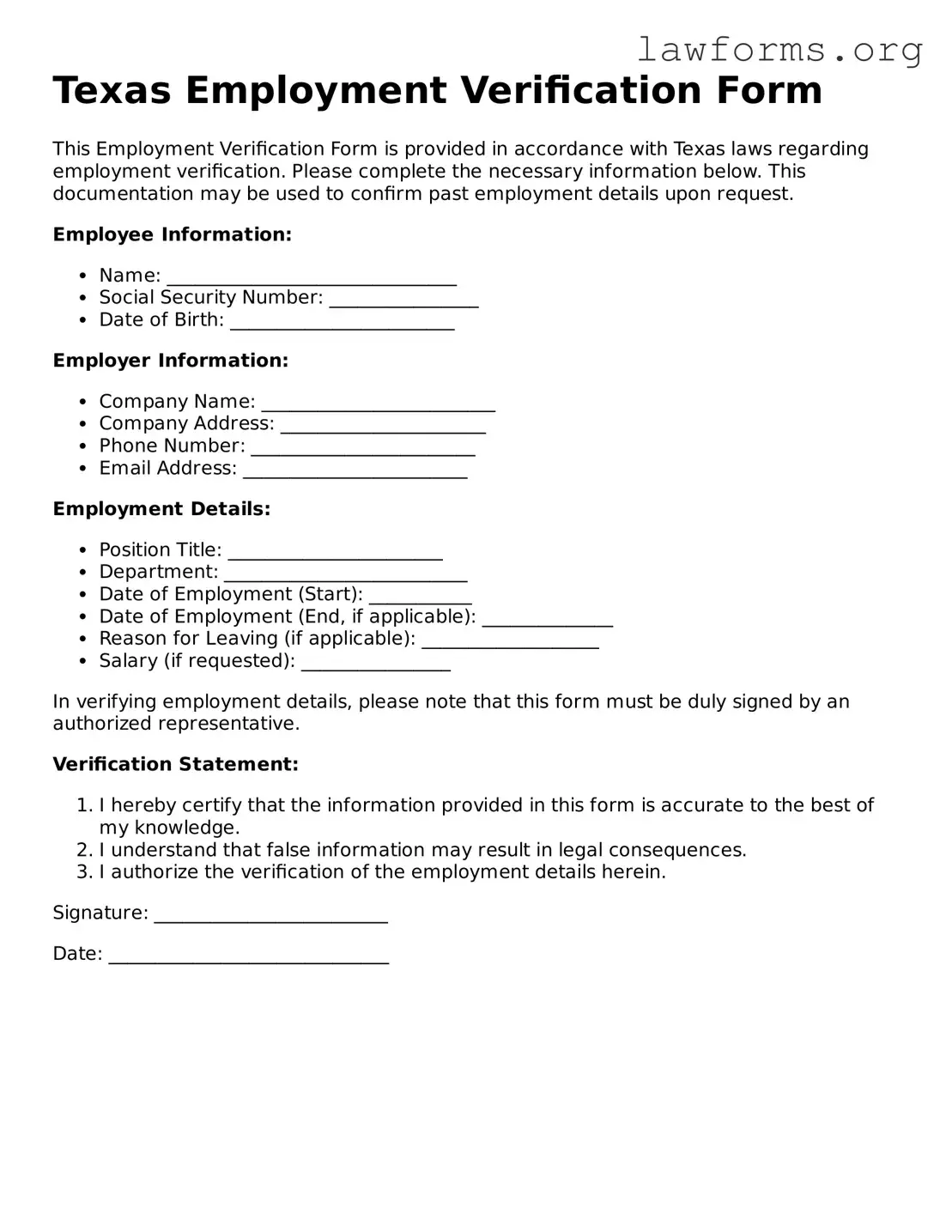Texas Employment Verification Form
This Employment Verification Form is provided in accordance with Texas laws regarding employment verification. Please complete the necessary information below. This documentation may be used to confirm past employment details upon request.
Employee Information:
- Name: _______________________________
- Social Security Number: ________________
- Date of Birth: ________________________
Employer Information:
- Company Name: _________________________
- Company Address: ______________________
- Phone Number: ________________________
- Email Address: ________________________
Employment Details:
- Position Title: _______________________
- Department: __________________________
- Date of Employment (Start): ___________
- Date of Employment (End, if applicable): ______________
- Reason for Leaving (if applicable): ___________________
- Salary (if requested): ________________
In verifying employment details, please note that this form must be duly signed by an authorized representative.
Verification Statement:
- I hereby certify that the information provided in this form is accurate to the best of my knowledge.
- I understand that false information may result in legal consequences.
- I authorize the verification of the employment details herein.
Signature: _________________________
Date: ______________________________
